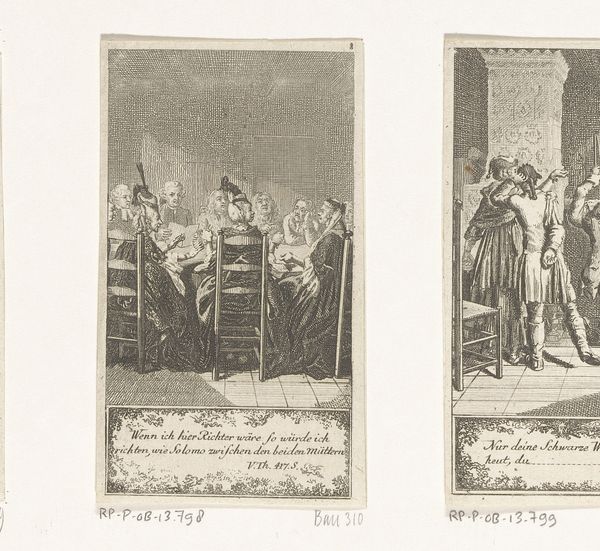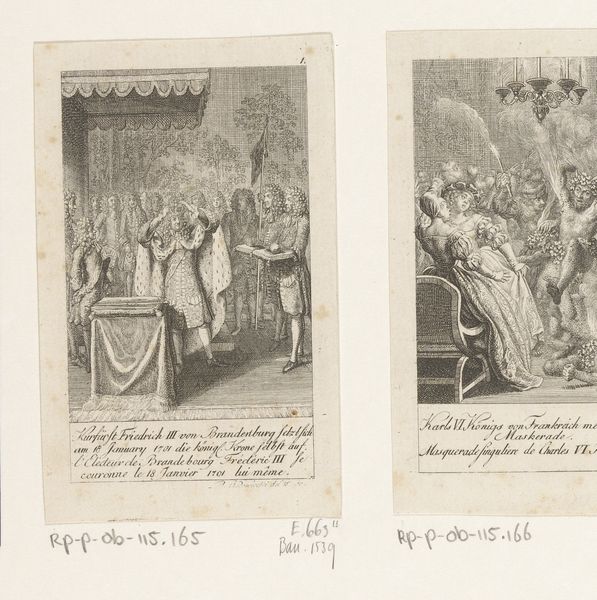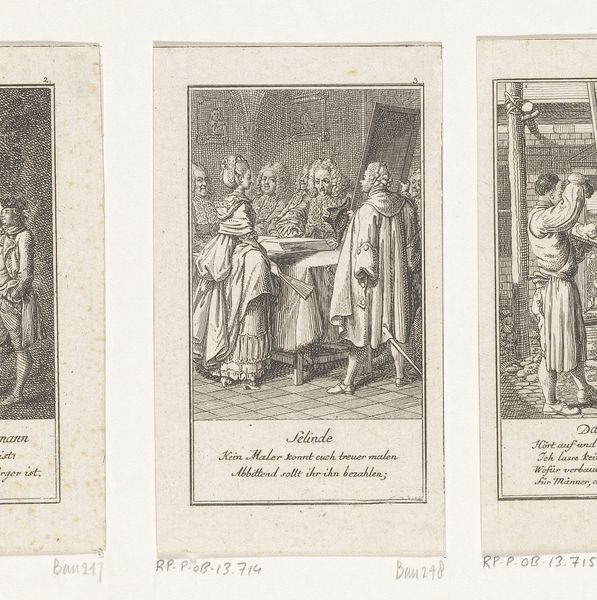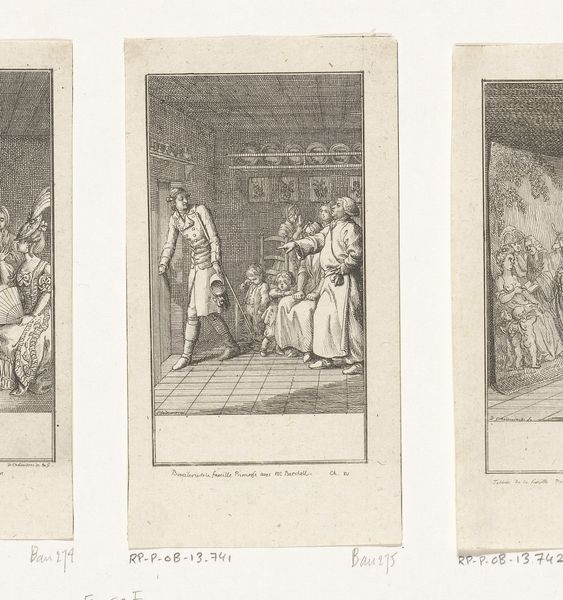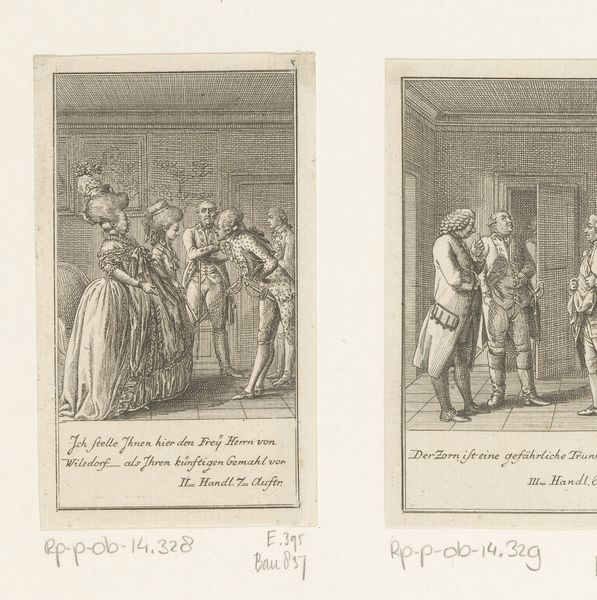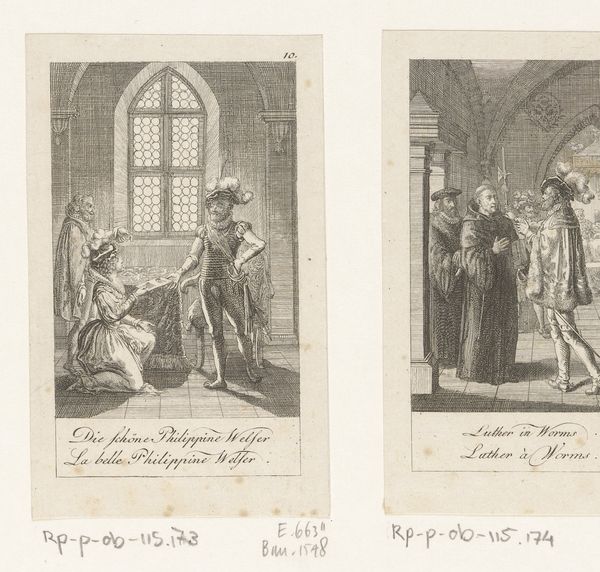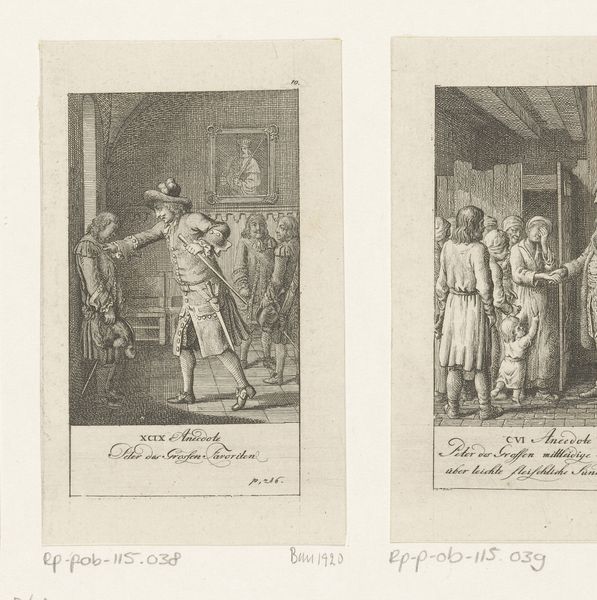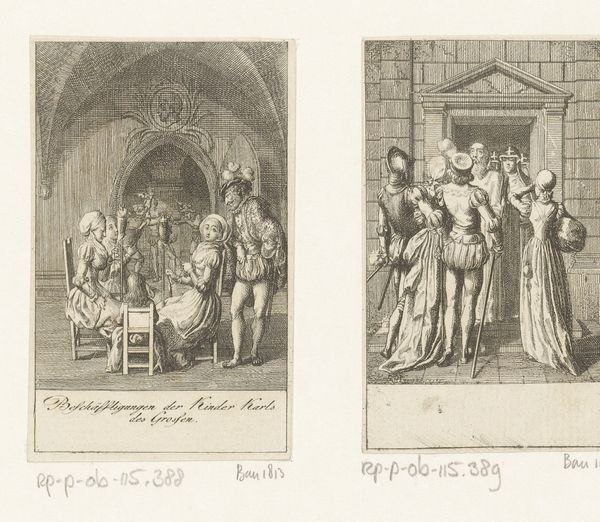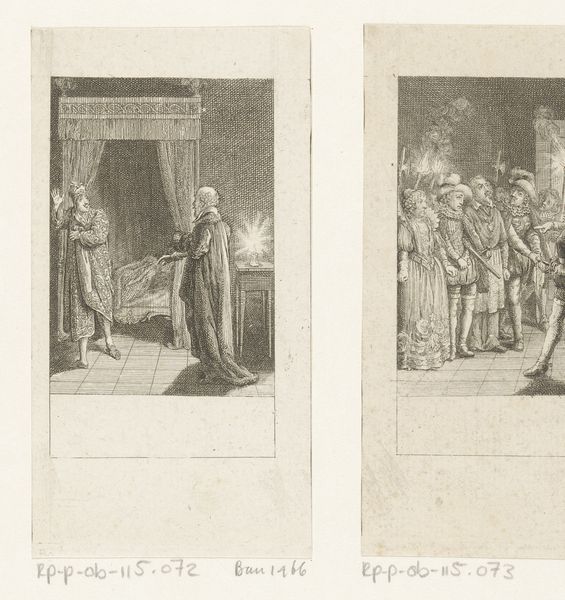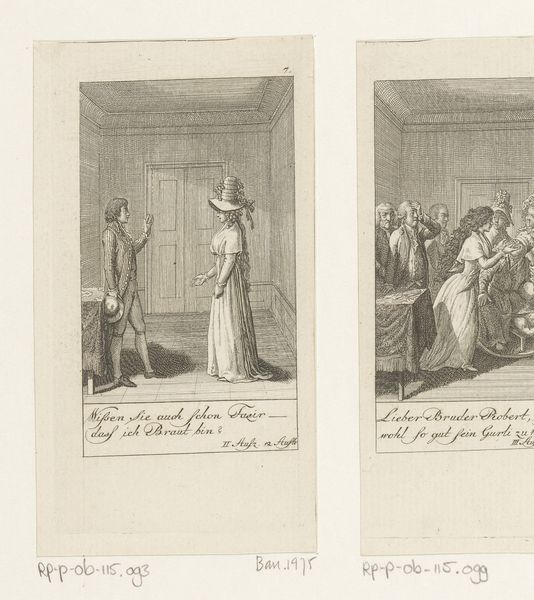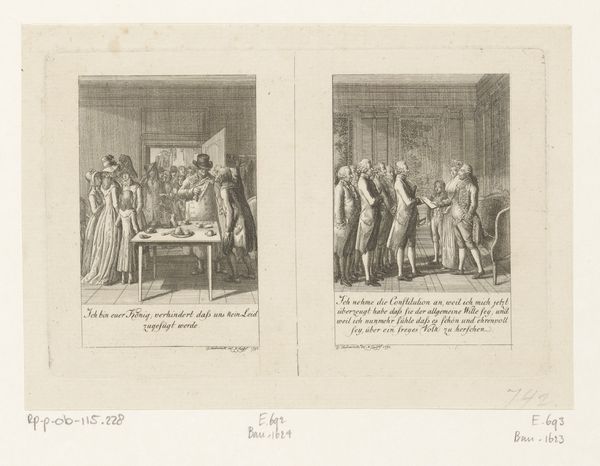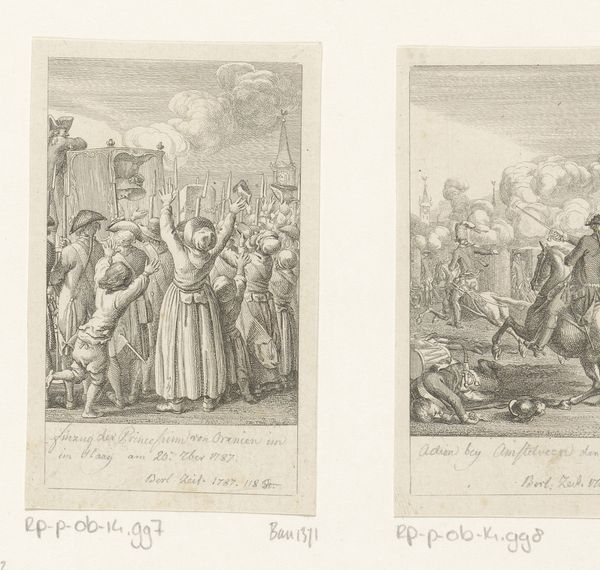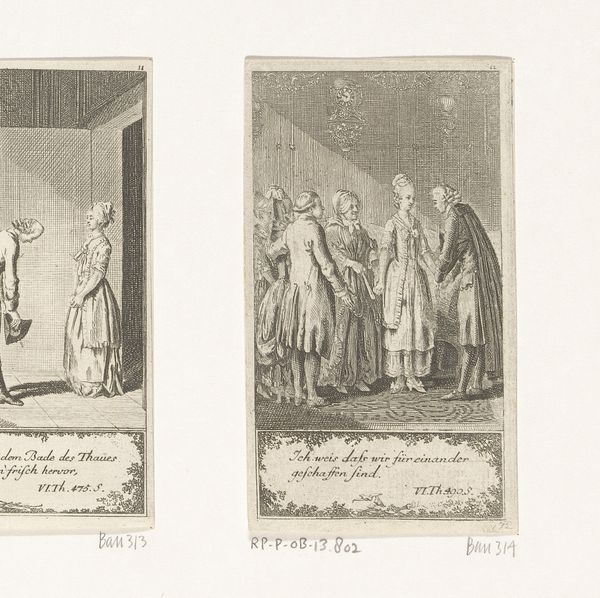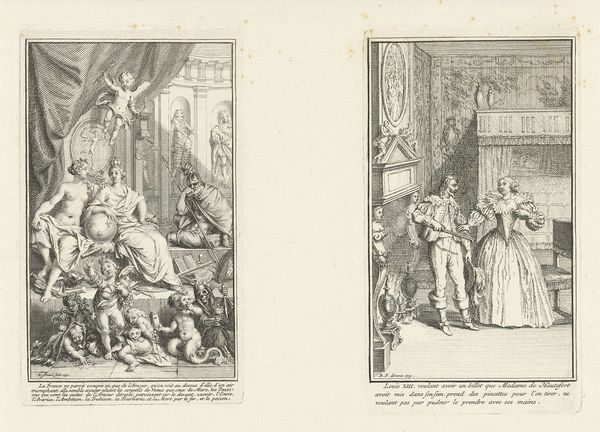
Dimensions: height 99 mm, width 58 mm
Copyright: Rijks Museum: Open Domain
Curator: This engaging print, "Dienaren kruisen hun degens" or "Servants Cross Their Swords," dates to around 1790. The artist is Daniel Nikolaus Chodowiecki, and it’s currently housed right here at the Rijksmuseum. I find these detailed engravings so compelling. Editor: My first impression is one of tense formality. There's a strange ceremonial quality amidst what seems like imminent violence. The contrast is striking. Curator: It is interesting how Chodowiecki uses the conventions of Baroque art to create a sense of controlled drama. There’s so much symbolism embedded here, particularly around duty and sacrifice. It almost resembles a stage play, the arrangement is dramatic, frozen, right before the decisive moment of action. Editor: I’m particularly drawn to the figures in the left panel. What narrative threads were artists of that era were weaving with depictions of honor, conflict, or subservience? It feels politically charged. I would imagine there’s a complex network of meanings regarding obedience and revolt that were prevalent in that historical period. Curator: Absolutely. Think of the context – late 18th century, the Enlightenment is challenging old orders. Chodowiecki likely explored how concepts of loyalty were being questioned and reshaped. This image also taps into older martyr traditions. One notices that their words in old German reference Paradise and "the Martyr’s Crown." We witness a sacred, yet troubling convergence. Editor: So it speaks to broader social anxieties regarding power, religious faith and personal choice during a period of change? Did depictions like these help to reinforce those hierarchical structures, or subtly critique them? Were viewers supposed to accept it without resistance, or does Chodowiecki suggest questions to arise when thinking of duty. Curator: Perhaps both. Art of this period served multiple roles. These images certainly helped people make sense of changing times. Chodowiecki was skillful at incorporating familiar visual conventions of honor to highlight and reflect this new era’s conflicting perspectives. Editor: A compelling perspective. It's easy to read "Servants Cross Their Swords" merely as a historical scene, but, in truth, as a lens to how socio-political tensions are visualized within cultural memory itself. Curator: Yes, and how images can become sites of reflection and negotiation of our world and history.
Comments
No comments
Be the first to comment and join the conversation on the ultimate creative platform.
